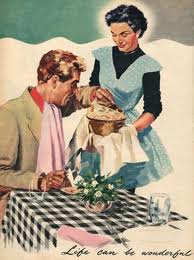
I wanted to expand upon a comment I wrote about gender roles in The Wonderful Wizard of Oz.
As I said, I think that the Scarecrow, the Lion, and the Tin Man all have a duality to their nature. The Scarecrow is on a masculine search, the search for brains. He proves his worth to the group time and time again by coming up with schemes and ideas to get them across rivers or across canyons. When Oz is in need of a new leader, he is the first choice, represented as the smartest, the best, and the most capable.
The Lion is also on a manly search for courage, but initially, he is shy and scared. Throughout the story he comes into his manliness, becoming stronger and more brave, and able to protect the group. He has a moment of weakness in the field of poppies and requires the help of little field mice to help him out, but his bulk and his weight which makes it a bit of a more difficult process assert his inherent masculinity.
The Tin Man is lovesick and on a journey for a new heart, so it’s reasonable to suggest that he would be more of an effeminate character, but throughout the novel he proves his manliness time and time again by cutting down trees, constructing rafts, and killing attackers to keep the group safe and sound on their journey to see Oz.
Both the Lion and the Scarecrow’s journey is a quest to become more masculine and even though the Tin Man’s desire for a heart is more effeminate, he too goes through a transformation into a stronger, more capable man.
Through these examples, Baum explores the idea that to be a man is to be in a position of power. It requires cunning and bravery and strength. Men are the leaders and the protectors of his world.
The only women in power are the witches, who are represented as either good or evil. The good witches are ladylike and good and pure who bestow kisses on lost little girls to protect them, and the evil ones are simply easily destroyed, or cast away characters. The only way to survive as a woman in the land of Oz is to be good and innocent like Dorothy and the good witches.





